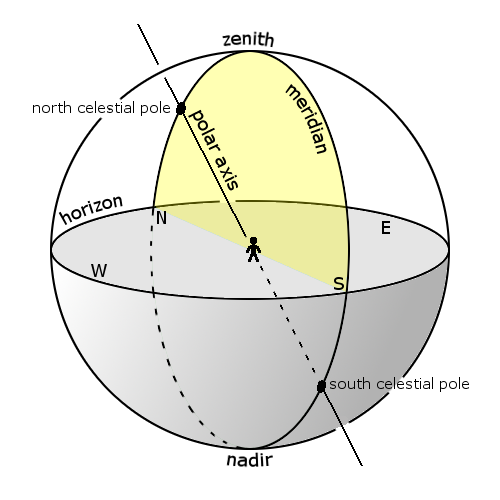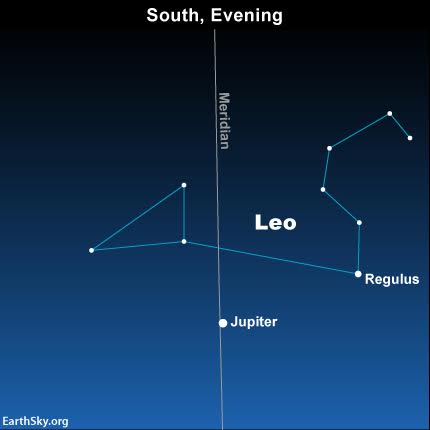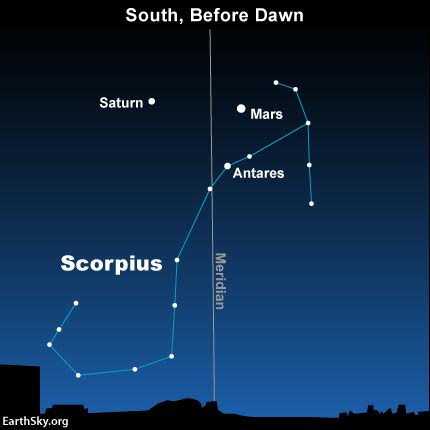Tonight – April 28, 2016 – as seen from around the world, Jupiter crosses your meridian and climbs to its highest point for the night at or around 8:30 p.m. local time (9:30 p.m. local Daylight Saving Time). That’s the time on your clock no matter where you are on the globe. Jupiter is said to be at upper transit (highest point) when it resides on the meridian.
How can you identify Jupiter? Easy. It’s the brightest starlike object in the evening sky now.
And, of course, this isn’t just a one-night event. Jupiter has been the brightest starlike object in the evening sky for some months and will remain so until Venus returns, sometime during July.
Telescope aficionados get especially excited when a planet shines in the vicinity of the meridian. The higher the planet climbs in the sky, the more the likelihood of a crisp image.
Have a telescope or a pair of binoculars? Then try your luck at seeing Jupiter’s four major moons this evening. Click here to view the present positions of Jupiter’s four major moons: Io, Europa, Callisto or Ganymede. Begin with low power, because it’s easier to get a sharper focus, especially when Earth’s atmosphere is less than steady (if the stars are twinkling wildly, then the atmosphere is turbulent).

Your local meridian is an imaginary semi-circle on the dome of sky arcing straight overhead from due south to due north. If you want to know the precise time that Jupiter transits (crosses) the meridian in your sky, check out this U.S. Naval Observatory page: Rise/set/transit times for major solar system bodies and bright stars.
When Jupiter (or any other heavenly body) crosses the meridian, that body resides at one of three places: at zenith (straight overhead), due south of zenith or due north of zenith.
By the way, two other visible planets will cross the meridian tonight: Mars and Saturn. These two worlds shine fairly close together on the sky’s dome, and on April 29, both will shine in the vicinity of the meridian around 2 a.m. local time (3 a.m. local daylight saving time). Again, the precise transit times for your sky are available at this U.S. Naval Observatory page.
By the time that July 2016 comes rolling around, Mars and Saturn will be near the meridian in the evening sky, which might be a more convenient time for viewing these worlds than in the wee hours of the morning.
Bottom line: Now is the time to enjoy Jupiter, the king of planets and the brightest starlike object in Earth’s night sky, as it crosses the meridian – line in your sky, passing straight overhead from due south to due north – around nightfall or early evening.













